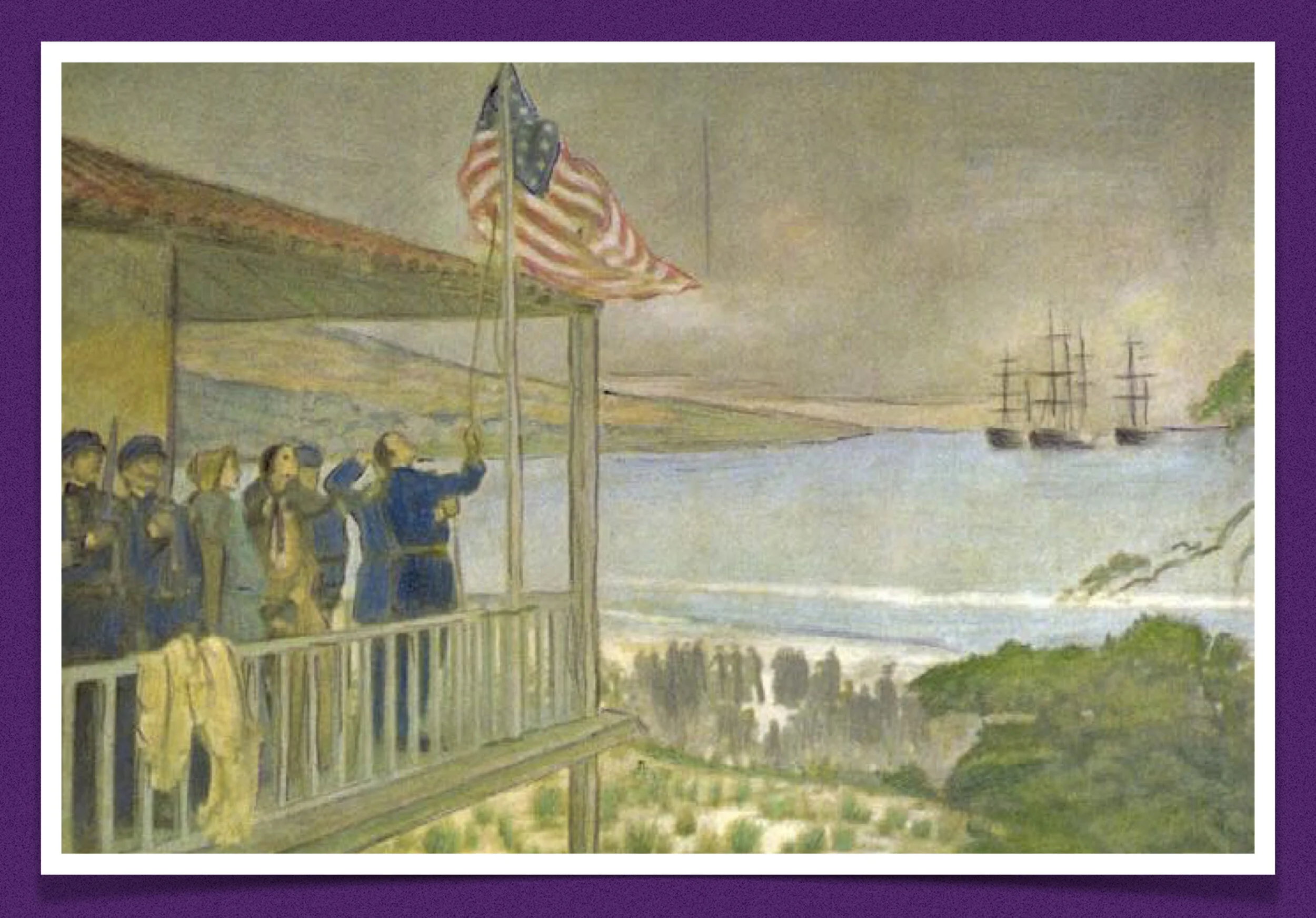
Literature
Central Coast Gallery Walk
Station Four: Mexican-American War
Manifest Destiny
By the 1800s, many Americans were interested in westward expansion, or extending the nation beyond its existing borders. Thomas Jefferson’s Louisiana Purchase had doubled the size of the country. But just 40 years later, Americans were looking even farther west. A newspaper editor coined the phrase Manifest Destiny in 1845. The phrase described the belief that the United States was destined to stretch from coast to coast.
War Breaks Out
Annexation of Texas became a major political issue because Texas would come in as a slave state, upsetting the balance of slave and free states. President James K. Polk solved this problem by negotiating a treaty with Britain settling control of Oregon. In 1845, Texas was admitted as a slave state. The following year, Oregon was annexed as a free territory.
But trouble was looming. Mexico had never recognized the independence of Texas. Furthermore, the border between Mexico and Texas was in dispute. Both Mexico and the United States claimed the land lying between the Nueces River and the Rio Grande, farther south.
War broke out when U.S. troops led by General Zachary Taylor crossed the Nueces and faced resistance from Mexican troops. U.S. troops defeated Mexican troops repeatedly in the U.S.–Mexican War.
The War in California
When American forces arrived in California, there was minimal resistance from Mexican forces. With only a few natural ports on the Pacific, it was a high priority for those planning the American war effort to seize the natural harbors in San Diego and San Francisco. In fact, General Kearny was instructed to march from Santa Fe, New Mexico far south enough to make sure that the San Diego Bay was to the north of his troops when they reached the Pacific Ocean. Monterey was also an important city to be captured in the conquest of California. At the time, in addition to having a natural bay, Monterey was also the capital of the Mexican territory of Alta California. Under the command of Commodore John Sloat, Monterey was captured by American forces with no resistance. The only shots fired was part of the 21-gun salute when the American flag was raised over the Custom House in Monterey.
End of the War
Eventually, U.S. troops led by General Winfield Scott captured the Mexican capital, Mexico City. The Mexican government sought a treaty to end the war. The United States and Mexico signed the Treaty of Guadalupe-Hidalgo in 1848. Mexico recognized Texas as part of the United States. Mexico also ceded, or gave up, present-day California, Nevada, and Utah, and most of Arizona and New Mexico, as well as parts of Wyoming and Colorado. In return, the United States paid Mexico $15 million.
“Now he turned his head toward the mountains of the east, the Gabilans, and they were jolly mountains, with hill ranches in their creases, and with pine trees growing on the crests. People lived there, and battles had been fought against the Mexicans on the slopes.”

